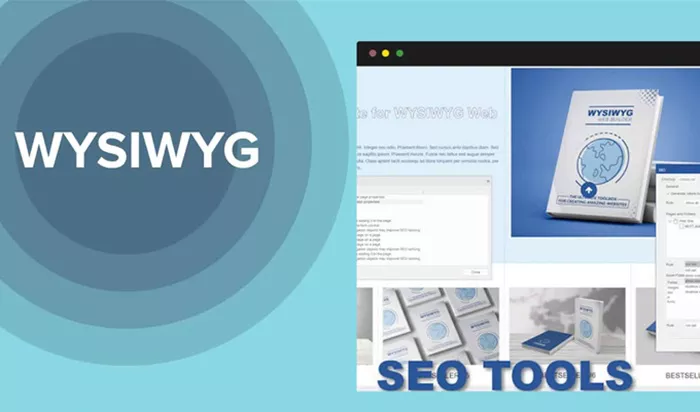Blogging has evolved significantly since its inception, moving from simple text-based diaries to sophisticated platforms that allow rich multimedia integration. At the heart of this transformation lies the WYSIWYG (What You See Is What You Get) editor—a tool enabling bloggers to create visually rich posts without needing to write complex code. This technology revolutionized blogging by lowering barriers for non-technical users and enhancing creative flexibility.
But which blogging platforms successfully integrated WYSIWYG technologies, setting the benchmark for usability and functionality? This article explores the key players, their features, and how they implemented this pivotal technology to shape the blogging landscape.
The Emergence of WYSIWYG Editors
Before the advent of WYSIWYG editors, creating web content required proficiency in HTML and CSS. These skills were a barrier for many, restricting blogging to those with technical expertise. WYSIWYG editors democratized this process by providing tools to format text, insert images, embed media, and style content, all through a user-friendly interface.
The core principle of WYSIWYG is simplicity: users see their content exactly as it will appear when published. This innovation was a game-changer, particularly for blogging platforms aiming to cater to a broader audience.
Pioneering Platforms in WYSIWYG Integration
WordPress
WordPress is often synonymous with blogging, and for good reason. Since its release in 2003, WordPress has embraced innovation, including its WYSIWYG editor. The platform initially introduced a TinyMCE-based editor, offering users basic text formatting and multimedia embedding capabilities.
In 2018, WordPress launched the Gutenberg editor, a block-based WYSIWYG editor designed to provide a more intuitive and versatile content creation experience. Gutenberg enables users to build posts using customizable blocks for headings, images, videos, and more. This modular approach is a prime example of how WordPress continues to push the boundaries of WYSIWYG technology.
Blogger
Google’s Blogger platform was among the first to adopt WYSIWYG technologies in the early 2000s. Its straightforward editor allowed users to create blog posts with rich text formatting, image insertion, and hyperlink embedding without technical expertise.
Blogger’s integration of WYSIWYG was instrumental in popularizing blogging among casual users. While it has since faced competition from more advanced platforms, its contribution to the early adoption of WYSIWYG cannot be overstated.
Medium
Medium entered the blogging scene in 2012 with a focus on minimalist design and ease of use. Its WYSIWYG editor is central to its appeal, offering a distraction-free writing environment. Medium’s editor emphasizes seamless formatting, allowing users to add images, videos, and embeds effortlessly.
Medium’s success lies in its ability to marry simplicity with functionality, making it a favorite among writers seeking a clean and modern blogging experience.
Squarespace
Known for its emphasis on aesthetics, Squarespace integrates a robust WYSIWYG editor that caters to bloggers and businesses alike. Its drag-and-drop functionality allows users to create visually appealing posts and pages without any coding knowledge.
Squarespace’s editor extends beyond text formatting to include advanced design options, such as layout adjustments and dynamic content blocks. This versatility has made it a go-to choice for users prioritizing visual storytelling.
Wix
Wix is renowned for its drag-and-drop website builder, but its blogging capabilities also stand out. The platform’s WYSIWYG editor is designed for simplicity and versatility, allowing users to create and customize blog posts with ease.
Wix’s editor supports multimedia integration, SEO tools, and social media sharing, making it a comprehensive solution for bloggers seeking user-friendly yet powerful tools.
What Sets These Platforms Apart?
User Interface and Experience: Successful WYSIWYG editors prioritize an intuitive interface that reduces the learning curve. Platforms like WordPress and Medium have excelled in this area by offering clean, accessible designs tailored to various user needs.
Customization and Flexibility: The ability to customize content is a hallmark of successful WYSIWYG platforms. WordPress’s Gutenberg editor exemplifies this with its modular block system, which adapts to diverse content creation requirements.
Multimedia Integration: Modern blogging is not limited to text; it includes images, videos, infographics, and interactive elements. Platforms like Squarespace and Wix excel in enabling seamless multimedia integration, enhancing the visual appeal of blogs.
Performance and Accessibility: Speed and accessibility are crucial for user retention. WYSIWYG editors on platforms like Medium ensure that content loads quickly and is optimized for various devices, ensuring a positive reader experience.
Challenges in Implementing WYSIWYG Technologies
While WYSIWYG editors revolutionized blogging, their development is not without challenges. Key issues include:
Balancing Simplicity and Power: Creating an editor that is easy to use yet powerful enough for advanced users is a delicate balance.
Browser Compatibility: Ensuring consistent performance across different web browsers can be complex.
Scalability: As platforms grow, maintaining the performance and functionality of WYSIWYG editors becomes increasingly challenging.
Despite these hurdles, the platforms discussed above have managed to navigate these challenges successfully, solidifying their positions as leaders in the blogging space.
Conclusion
WYSIWYG technologies have been a cornerstone of modern blogging, empowering users to create content without technical barriers. Platforms like WordPress, Blogger, Medium, Squarespace, and Wix have successfully incorporated these technologies, each bringing unique strengths to the table.
From WordPress’s versatile Gutenberg editor to Medium’s minimalist approach, these platforms have redefined what it means to blog in the digital age. By prioritizing usability, flexibility, and multimedia integration, they have not only met but exceeded user expectations, shaping the future of online content creation.
Related Topics
- How Can You Start Blogging Without Showing Your Face?
- How To Use Flipboard For Blogging?
- How Can You Use Google Trends for Blogging?

